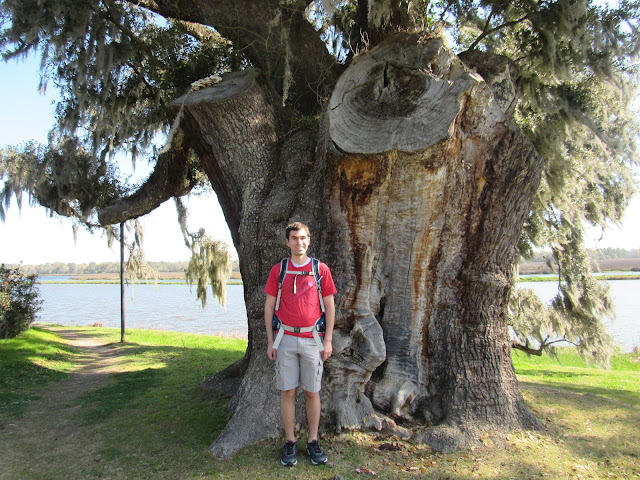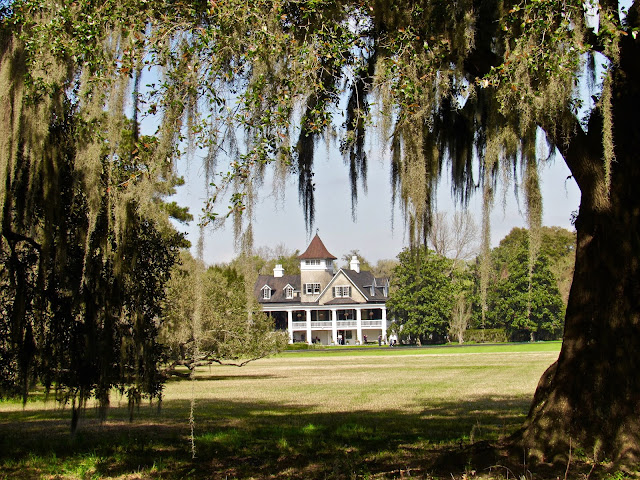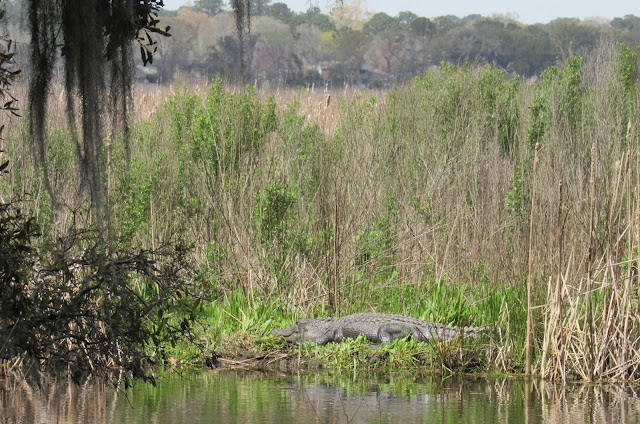Southern Trip: Plantations
We were excited and interested to visit some plantations on our first trip to the deep south- so we visited three!
A few things they all had in common were:
-They grew rice (and by they you know who was actually doing the work and who was sitting on their butts on the front porch drinking sweet tea).
-The original houses were burned down by the Union Army.
-They did not remain plantations after the Civil War because they couldn't function without all of the free labor.
Plantation #1 was Middleton Place, which is just outside of Charleston, SC.
This place was built in the 1730s and claims to have the oldest landscaped gardens in the U.S. We happened to visit on a day that was perfect for enjoying the gardens- 70 degrees with blue skies. After a Wisconsin winter, it felt like paradise.
Besides loving the weather, we loved that the gardens were inspired by Versailles- one of our favorite places!
I actually had no idea that South Carolina had alligators, so I thought David was joking when he pointed this guy out. It was the first alligator we'd ever seen (many more followed the next day).
They estimate that this huge live oak tree is 1,000 years old. Side note: David loves the straps on his backpack and I hate them.
The main house was destroyed but this guest house remains. Not bad just for guests.
Since we had a tour booked in downtown Charleston later that day, we opted not to do any guided tours here. I wouldn't have minded learning some more history, but it was relaxing to just wander at our own pace.
Plantation #2 was Magnolia, which is also just outside of Charleston.
4 slave cabins remain out of the 11 that were originally there. They were built as duplexes, and usually a large family lived on each side. Please note the fact that there are gaps in the walls and floor.
Quite a difference from the main house that we toured next...
The same family has lived on this land since 1676. People were living in this house until as late as 2013, and there are still family members who live in other houses on the plantation.
To hold onto the land after the Civil War, in 1870 the owner at that time decided to open the gardens to the public and charge an admission fee. That's how this place has made an income ever since. I guess stealing his sister's fiancé wasn't an option. #gonewiththewindreference
We made the most of our visit to Magnolia, and also toured the surrounding marshland by tram and boat. There were a lot of alligators living their best lives in the swamp.
Plantation #3 was Wormsloe, just outside of Savannah, GA.
There was less to tour here, but when I saw a picture of the oak alley online I knew we couldn't miss it.
 |
This beautiful tunnel of trees goes on for 3 miles. It's quite the experience to drive through. And dance through.
I was in love with the live oaks and Spanish moss throughout our trip to the south. I must confess that at first I thought the moss was part of the tree... but it's a different plant! According to one tour guide, it was named Spanish moss by Native Americans.
I guess most Native Americans don't grow facial hair, so when they first saw the beards of Spanish explorers/conquerors/whatever they were... they thought it was weird and looked like the moss. So this moss is not actually from Spain; it just looks like Spanish facial hair haha.
Wormsloe was built by Noble Jones, who came to Georgia with the first group of settlers from England in 1733. There's not much of the house left, but this is the oldest structure in Georgia.
After seeing the ruins of the house we explored some of the nature trails.
All of these places really felt like being in another world. At a minimum I definitely felt like I wasn't in the U.S.


































Comments
Post a Comment